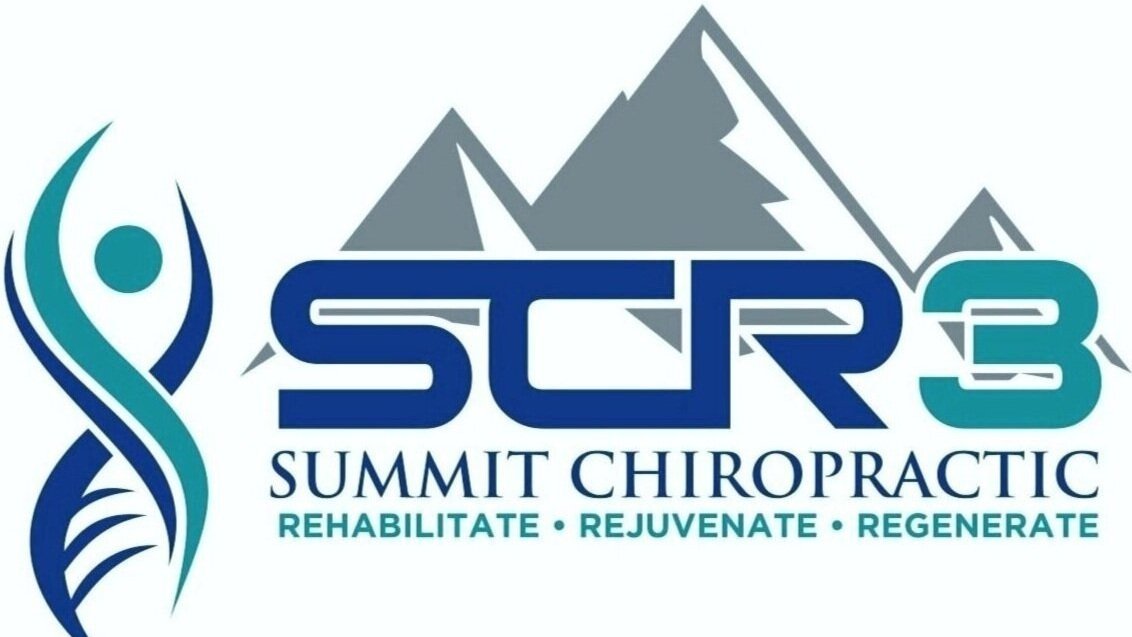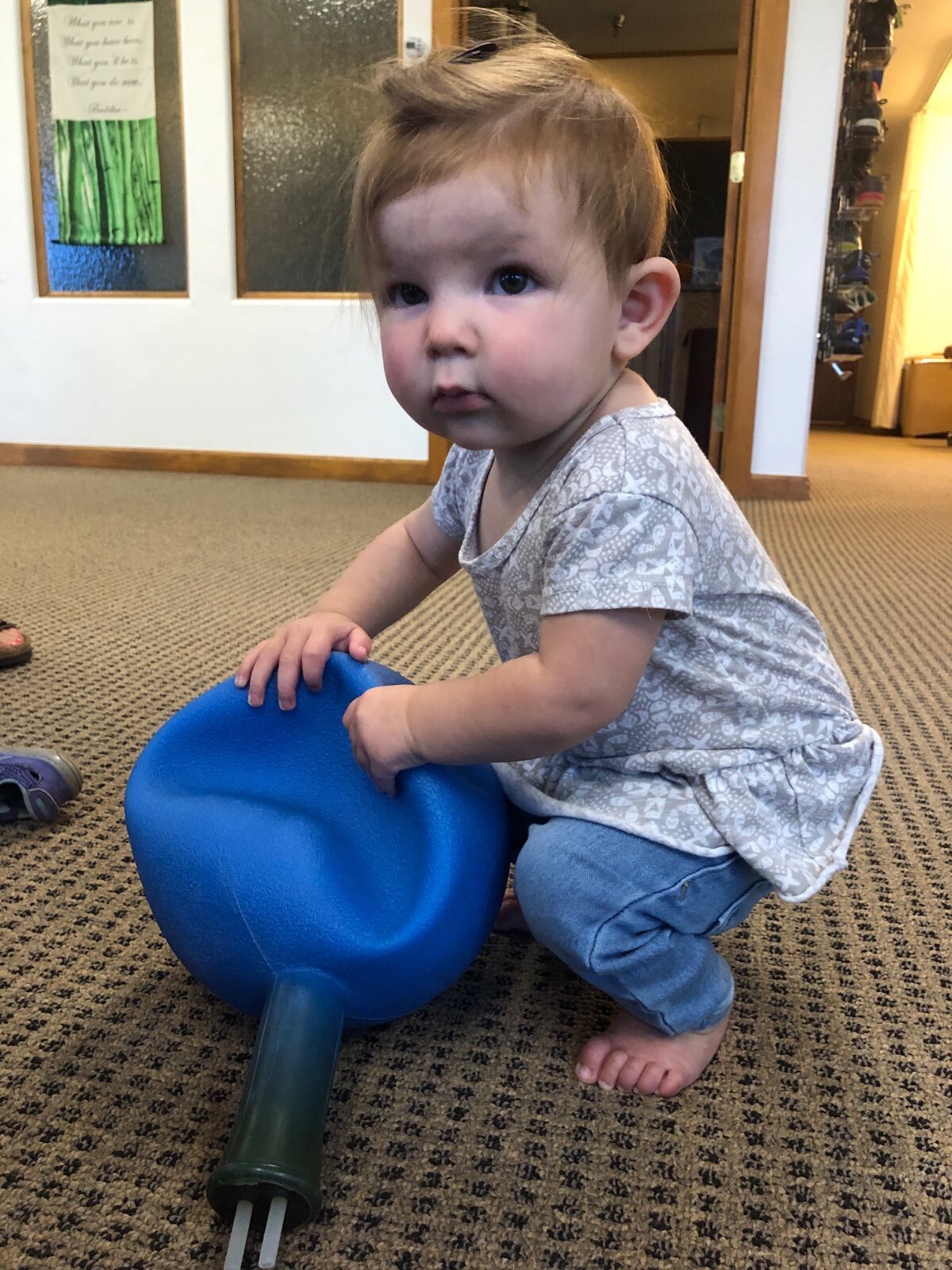What is DNS Part 3: Babies and Movement
In all of the courses of DNS whether it be an exercise course, a shoulder course, or a scoliosis course, the notes are rife with pictures of babies. Typically very cute pudgy Czech babies moving around and crawling, playing with toys, trying to stand etc… These pictures of children and babies were going to be the foundation of the rehabilitation and movements that we would be using on our largely young adult to older adult populations in clinics. You may be wondering, as I was initially, why base rehabilitation movements on the movements of wriggly babies that can’t even stand up straight? To the untrained eye, these are the uncoordinated expressions of random muscle action, but if you actually watch and observe the movements of a child, you recognize a process of miraculous discovery and learning taking place. A baby does not just grow in size, it develops. Development is not simply a process of enlargement, it is a process of learning and problem solving. It is a process that is incredibly complicated, yet somehow happens automatically. Just as birds do not need to be told to fly south, or turtles led through the complex systems of oceanic currents for migration, babies will automatically develop movements in a predetermined fashion due to innate neurological processes that are set in motion before birth even begins. Yes, every kick in the womb is a metaphorical step towards full kinesiological development. Our movements develop as babies largely through the first year of our lives, with milestones of development that should be reached. Development is an exciting learning process during this time. A baby becomes motivated to move due to some outside factor; either a toy, or food, or the sound of their parents voices, and then attempts to move towards whatever that motivation is. What we see is a writhing, inefficient and slow attempt to crawl, but what is actually happening is the baby's neurological system is learning how to orchestrate the complex symphony of muscle actions necessary to go from point A to point B. Walking, a process that most of us perform on a daily basis, is a largely subconscious process. The cortex, or area of the brain responsible for our conscious thought, can be used to direct our movements. So if I look at my coffee cup and think about reaching my arm out, grasping the cup, and then lifting it to take a drink, that is a conscious thought that brings about a movement. When was the last time you went through that process to lift up your coffee cup? Probably never, because in our minds we have a desire to accomplish a task (drinking coffee), and then our brain utilizes subconscious processes to carry out that desire. These are the processes that are being developed in the first year of life. These subcortical processes are the true governors of our everyday movements, whether that be lifting the coffee mug, driving, kicking a soccer ball, or standing from a chair. All of the subcortical movement patterns necessary for performing these actions are developed during our first years of life, and these patterns are formed in an exquisite fashion. When we are born, we are totally weak creatures completely dependent on assistance from adults for survival. We have no coordination, the only time we can exhibit muscular strength is when we are expressing neurological responses to touch (babies fingers curling around your finger = neurological response which a baby has no control over). Relative to other animals, we very slowly develop the ability to stand and walk. A baby deer is able to walk and somewhat run hours after birth, which a human child takes 12-15 months to do the same. Unlike the deer, we develop our stability from our spine outwards. This is why children cannot crawl or turn over until after approximately six months of age. We develop the ability to control our core muscles around our spine, then the muscles of our shoulder and hip girdles, and then we finally begin to load our feet and hands around 9 months of age. When we finally begin to load our extremities remember that, barring any kind of traumatic incident, we have the weakest muscles that we will ever have. Our neurological coordination system has to take the most efficient route to using our muscles, through a principle called joint centration. Joint centration is when we have the highest amount of surface area contact between the two bones in a joint, and all of the muscles around these two bones are equally active. This distributes load equally across both the joint, as well as the muscles surrounding it. This is why it is extremely rare to see super tight individual muscles in a baby that is exhibiting normal neurological development (normal neurological development being characterized as hitting certain kinesiological milestones and inhibiting neurological reflexes in an appropriate time frame, but this is fodder for a later blog post). We always notice when children struggle with a particular movement such as walking and standing up, yet we rarely note the ease at which they perform the movements which they have already mastered. It is very rare to see an adult in western culture be able to squat or lunge with the ease and mastery of a child at 12 months of age. Most of us have completely lost the capacity to roll over on a surface more dense than 1 foot thick marshmallows that we sleep on every night. This is because we have adapted our environment to ease movement, as opposed to adapting our movements to conquer our environments.
This concept of joint centration is not only important for our muscles, but also has a major impact on the structure of our bodies as we develop. In the first week of anatomy classes, any medically trained professional learns about Wolf’s law. Wolf’s law states that the structure of the body is determined through adaptation to the load which is placed upon it. This concept is a fascinating one because it illustrates how our bodies form in response to our neurological expression of movement and muscle action. We can see Wolf’s law in action in many forms, if we lift heavy weights, then our bones will increase in density to adapt to the higher loads that we place on them. Pitchers and athletes who dominantly use one arm or side of their body developed both different size and shape in the throwing arm, even relative to their other arm ((Helmkamp et al. 2020; Polster et al. 2013) In contrast, if we lie sedentary, bingeing on Netflix and television then our muscles will atrophy, becoming smaller and weaker, and in turn our bones will do the same. In individuals with neurological disorders that affect muscle coordination, such as cerebral palsy, we see a very different expression of muscle activation and coordination. These different patterns express themselves not only in how the person moves, but also in how their anatomical structure develops. They are not only neurologically different, but structurally different as well.
We as adults get tightness in individual muscles (hence the target of many physical therapy programs) because we are not utilizing proper centration to distribute the load across as many muscles as possible with the joints in proper centration. Because of repeated movements in our environment, improper cueing from coaches in youth sports, and potentially a non-ideal movement strategy developed early on in life, we can lose centration in our joint movements as we get older. We habituate movement patterns that are not ideal, leading to injuries in specific aspects and muscles of the joint. The reason that these exercises feel so different, and the reason even I struggle to perform them initially, is because the therapist is cueing the person into a more centrated position, balancing the tone of the muscles, and increasing the contact zone of the joint. It is not that the exercise is inherently difficult, it is simply stressing our coordination system in a manner different from our ingrained movement habits. Our minds want to use the patterns that we have created and engrained because over time these patterns have become unconscious and more efficient, but these may also be part of what contributed to our overuse injuries, tightness in specific muscles, and injury to connective tissues such as ligaments, tendons and cartilage. DNS targets this underlying coordination system, attempting to get to the root of the issue and change our unconscious movement patterns (Yoon and You 2017; Kim et al. 2016).
DNS was an answer to many of the frustrations that I experienced while rehabilitating my own injuries. It has helped me understand some of the reasons I was so injury prone while in college. This has in turn helped me to understand why many of my become injured, as well as how to help them not only recover from injury, but also help increase their performances. DNS has taught me there is no cookbook or recipe in treating injuries. It has taken instructors from all over the world to teach me to look at and treat the individual in front of me. This individual does not fit into a predetermined box, and their rehabilitation shouldn’t follow a script that was created before they even walked in the door. Rehabilitation should follow general principles with individual modifications that fit the individuals needs.

